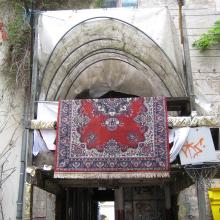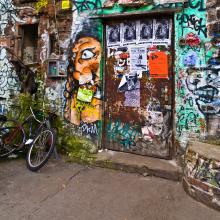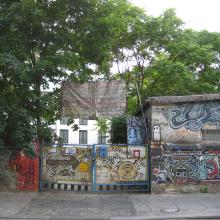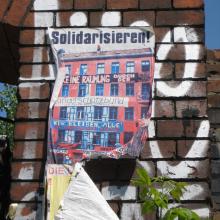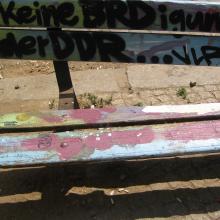Hausprojekte
Hausprojekte are residential communities, or “living projects,” which are often but not exclusively derived from squats from the early 1990s. Most of them now occupy their buildings legally. These communities have an alternative character: they offer affordable housing; residents engage in the collective, collaborative management and upkeep of their living spaces; and apartments coexist with cultural venues such as art studios, workshops, cafés, and performance spaces. Many of these communities have also chosen to maintain signs of spatial and visual dilapidation in their buildings—from grimy, eroding façades to wildly growing plants and rusting metal fixtures. Often located in trendy neighborhoods, they stand out from their renovated and freshly painted surroundings. The decayed state of the buildings keeps rents low, and communicates the antigentrification stance of Hausprojekte in the cityscape. These projects are significant as sites of social, cultural, and economic dissonance. They offer a model of inhabiting urban space that exists in opposition to real estate speculation and commodification.
Although Hausprojekte thrived in Berlin after 1989, thanks to the many empty buildings with unclear ownership in the eastern parts of the city, they do have a longer history dating back to the postwar era. Before unification, East and West Berlin also harbored similar living communities and squats, especially in neighborhoods such as Kreuzberg and Schöneberg (West Berlin) and Prenzlauer Berg (East Berlin). For more on the history and location of current and former Hausprojekte and squats, see the website Berlin Besetzt.
